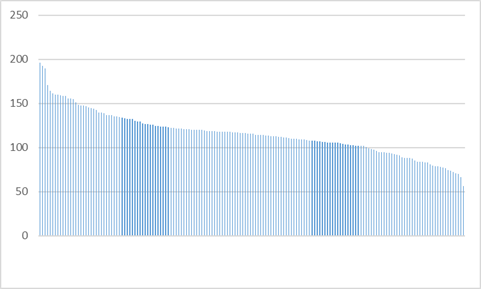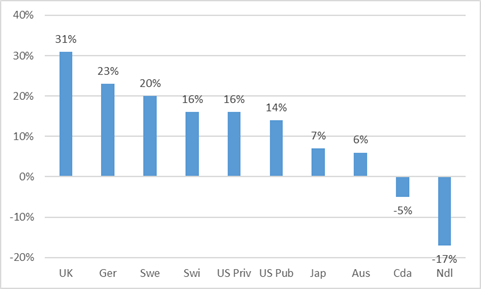Yesterday we looked at the absolute incomes of world-class universities; that is institutions in the top 200 of the 2017 Shanghai Academic Rankings of World Universities (ARWU). Today, I want to look at the question of whether things are getting better or worse for these institutions.
Of the 174 top-200 ARWU universities for which we have financial data for 2015 or 2016, 155 have data on finances and students going back to 2006. For another 11 institutions, we have data going back to 2008 and can impute figures for the missing years based on comparable institutions in the same countries. We can thus make reasonably confident statements about the evolution of expenditure per student over the past decade for 166 institutions.
Our review of financial data shows that virtually all institutions in the top 200 are spending more than they were a decade ago. However, most institutions – at least those outside Japan – are also growing in size.
Across these institutions, budgets per student increased on average by 15.7%, and at the median by 15.8%. Over 80% of institutions top-200 institutions, for which we have data, saw increases in per-student funding. However, this is true of only three of the eight Canadian institutions (Ottawa, Alberta and Calgary).
Figure 1: Per-student expenditures in 2016 across all ARWU-200 institutions, 2006=100
The largest increases in per student spending took place in the UK (Cambridge 96.3%, Warwick 64.6%), the United States (particularly at the super-rich/super-specialized schools such as UT Southwestern Medical Centre 92.6%, Icahn College 89.6%), and among a few major central European schools (Munich 59.8%, Leipzig, 59%, Bern 58.8%). In total, forty-eight institutions saw real per-student increases of 25% or more, while another thirty-nine saw increases of between 15 and 25%. Thirty-one institutions saw decreases of 5% or more, including six institutions with per-student funding decreases of 25% or more, including two from the Netherlands (Wageningen, Delft) and two from the United States (the big one being Case Western).
If we look at this at a national level, what we see is quite striking. In the UK, funding per student at top-200 institutions is up by a stonking 31%. In much of continental Europe, expenditures per student are up by 15-25% and in the US it is about 15%, with the rate of increase slightly higher in private institutions than in public ones. The two big exceptions are the Netherlands, where per-student expenditures have fallen by 17%, and Canada, where they have fallen 5%.
Figure 2: Increase in per-student expenditures at ARWU-200 Universities by country, 2006-2016
(The Canadian figures would look a little better if we focussed on operating expenditures rather than total expenditures – one of the main if under-appreciated trends in Canadian higher education finances over the past decade or so is that growth in operating expenditures – mostly salaries – have been growing much more quickly than expenditures on capital and research. I know no one will believe that but it’s true)
More tomorrow.



 Tweet this post
Tweet this post
